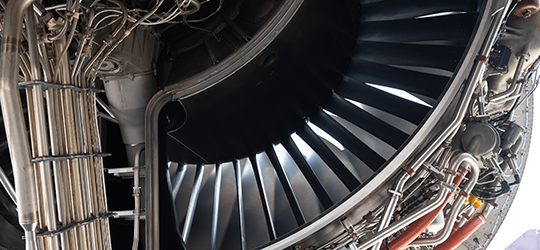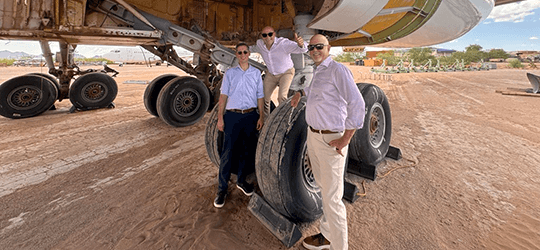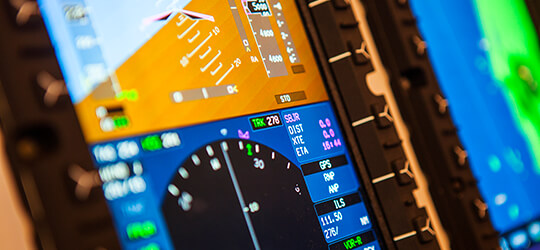
Aviation Supply Chain Issues, Considerations for the Finance and Legal Sectors
There is much talk about “supply chain” issues. Below we look in more detail about what has caused them and how the future landscape appears. Five years ago, the world and our aviation sector came to a standstill in the wake of the COVID-19 outbreak. There was virtually no passenger traffic and the only sector that appeared to prosper was within air cargo as health supplies were transported from A to B. Most of the data used to measure the recovery is based on 2019 traffic data. However, there were several issues, one might contend, in the supply chain that pre-dated COVID-19.

The above simple illustration shows the main players and factors that impact air traffic growth. Ultimately, if we agree that our industry is fundamentally about moving people and freight from here to there, then this can only be a smooth process if the above sectors are functioning at an optimum level. Taking each one in turn, let’s see how they have fared over the last decade, not just since COVID-19.
Manufacturers
Whilst new aircraft and engine programs have always had “entry into service” teething problems, these have largely been expected and understood. Aviation progress pushes the boundaries of aerodynamics, materials and production processes. It must operate safely and is therefore heavily regulated. There are established processes that were developed under the International Civil Aviation Authority (ICAO) that set out the fundamentals of design, certification, production, training and the ongoing airworthiness of aircraft programs. As we’ve seen, this process was tragically flawed and contributed to the loss of two Boeing 737 MAX aircraft and all souls on board in 2018/19 leading to an unprecedented long-term grounding of the MAX. Meanwhile, engine reliability on other aircraft programs has also presented a challenge for the industry, albeit one that has not resulted in any fatalities as of this writing. Well documented reliability and durability issues hit the Rolls-Royce Trent 1000 engine. Several operators of the Boeing 787 had severe operational issues due to unscheduled grounding of aircraft that awaited the return of engines from repair. Aircraft could not operate to ETOPS (extended range twin engine operations performance standards), incurring longer flights, increased fuel burn, and cash operating costs. Other “new” engines on the MAX (LEAP-1A), A320neo (LEAP-1B and PW1100G), and A220 (PW1500G), respectively, were also not “living up” to time on-wing expectations. A fundamental benchmark used by airlines and OEMs is that a new aircraft program must achieve cost savings of around 15% to make the effort and investment worthwhile. These aircraft, with their new engine technology and some airframe improvements, were claiming such advantages. Whilst it can be argued that the initial fuel burn savings were achieving the 15% research & development benchmark, durability has been the issue. The subsequent engine issues required engines to need shop visits more regularly than envisaged to the extent that many hundreds of A320neo aircraft are grounded today. It is understandable that airlines, leasing companies and financiers are somewhat perplexed by the trajectory of our typically resilient industry.

Regulators
The tragic loss of life in the 737 MAX accidents led to the US Federal Aviation Administration (FAA) certification process for aircraft variants being brought into question. Questions were asked about the lack of robust investigations into the design of new control systems and the training that would be required of flight crews. That led to regulators around the world, not just the US FAA, taking their time to make more thorough investigations of the aircraft certification process. This is alongside the backdrop of decreasing numbers of experts employed by those regulators for several years, if not decades. Subsequently, we are seeing delays to the 777-9, 737 MAX 7 and 10 programs. For several decades the regulators had trusted the manufacturers to self-regulate and, in our view, that trust has been lost. The only way trust will be rebuilt is with better processes, reporting, and improved safety outcomes. The loss of the fuselage door plug on an Alaska Airlines 737 MAX 9 highlighted that the assembly process relies on robust quality checks all the way through the manufacturing process. It is not only the primary manufacturers who have faced problems. It is not surprising that Boeing cannot simply increase production when they see fit, they must first prove to the US FAA that quality will be assured. Whilst not subject to such formal procedures, in our view, EASA will be taking note if Airbus increases production rate plans. Considering manpower… Most of the suppliers into Boeing and Airbus aircraft have had their own post COVID-19 manpower problems. COVID-19 saw many of these businesses needing to shut down, or placing experienced, mature staff onto furlough schemes or making them redundant. Many of those folks do not want to return to full time employment and that exodus means replacements, if they can be found, need years of training and on-job experience to properly replace what was lost. To illustrate this, below is a table outlining the expected deliveries from each manufacturer and their actual deliveries. You can see post-COVID all of the major aircraft manufacturers have encountered production delays and have not met their expected target delivery rates.

MRO Sector
Similar to the above point, the loss of experienced inspectors and quality department staff as well as equally essential technicians and craftsmen at MRO facilities, means that the available man hours at many MROs is lacking. The reduced number of new aircraft deliveries due the MAX grounding, COVID-19 halts in production, the Boeing strike, and lower than anticipated post COVID-19 period deliveries has served to create stronger than expected demand for older aircraft. Alongside the airframe heavy check facilities struggling to meet demand, the engine shops needing to address Pratt & Whitney GTF’s maintenance requirements have been overwhelmed. Other sectors such as older widebody passenger aircraft like the Boeing 767-300ER, that many thought would be long since retired, have seen a surge in legacy engines also needing to be repaired/refurbished.
Other Factors
Russia has been a major and important supplier of raw materials into the aircraft manufacturing process. Perhaps not surprisingly, some metals and minerals have suffered reduced and/or limited supplies throughout Russia’s war with Ukraine as trade with Russia diminished. Whilst this has been somewhat alleviated, it has led to manufacturers realizing that commodity sources need to be more diverse, with less reliance on a single supplier. The recent tariff policy from the US administration will take time to settle. The “tit for tat” retaliation that is likely could see longer term adjustments to new aircraft order policies from countries’ flag carriers taking a more political stance on new orders rather than purely commercial reasoning. There are several interrelated consequences to tariffs. One positive for airlines that mostly earn local (non-US dollar revenues) but have to buy USD to pay for aircraft finance and leases, is that those US dollars could become cheaper to buy if the USD weakens against their local currencies.
Conclusion
Given the aforementioned supply chain, regulatory and staffing issues, we see an estimated shortfall in aircraft deliveries of approximately 4,500 to date. While we know that key stakeholders are working tirelessly to resolve these issues, there are no quick fixes to alleviate the supply imbalance in the near term. We expect to see continued emphasis on maintaining existing fleets, supporting elevated valuations for mid- and late-life aircraft. The pace at which engine manufacturers can repair and improve the reliability of next generation engines will also allow existing airframes to return to service, adding much needed capacity back into the system.




